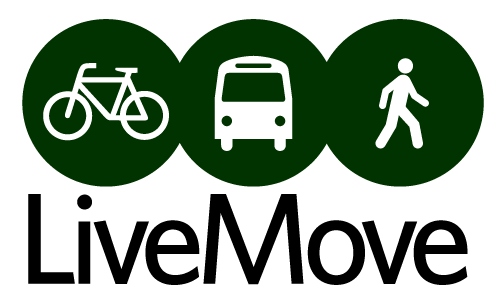Steph Loves Bikes: Finding the Right Solution (Utrecht)
/Our co-director, Steph Nappa, is writing this series to share her experiences and lessons learned from her study abroad in Europe. You can also follow along on Instagram with #stephlovesbikes.
The city of Utrecht gets it. They’ve established a Department of Mobility that brings together urban planners, transportation engineers, and landscape architects to find creative solutions to the city’s more unique and challenging intersections. They decide which mode of transportation to prioritize (most often biking) and then find a way to make the space work best for that mode while still allowing space for the other users of the space. This is exactly the way I think cities should plan their road network and transportation systems so I was very happy to hear there’s a place that’s actually working this way.
A street where bikes are given a larger percentage of the road space compared to cars.
Ronald, our guide for our days in Utrecht, took us on a bike tour around the city to show us some of the intersections the Department of Mobility had recently changed. Contrary to the way bikes have been prioritized in Copenhagen with separated bike lanes, Utrecht has started mixing bikes with cars again due to the high volumes of bike traffic and limited space on the roads in their historic city center. In many cases, bikes have priority on the full road, but cars are still allowed to drive there. Red pavement signals that a road is likely to have high levels of bike traffic and cars drive slower as a result. In one intersection, the connection for cars was broken with the use of a large pedestrian plaza, though cars are still able to drive through the space if they want. Differences in pavement materials and color, along with street furniture, slow traffic through the space and overall a much larger portion of the intersection space feels dedicated to pedestrians and bikes. In Utrecht there were a lot of spaces that were informally taken away from cars and given to other uses without completely stopping car use in the space, which I think is an interesting approach to take. It was surprisingly effective and I think this is due to the fact that everyone seems to pay more attention to other people in the road space here. No matter which form of transportation people are using, whether it be cars, bikes, or just walking around, everyone needs to be aware of their surroundings and adapt to the movement of others.
The intersection where cars can still technically travel, but the street design signals that the space is more for bikes and pedestrians.
As I think about the types of solutions that can be implemented in the US, I don’t think the mixed transportation modes would work as well as it does in Utrecht. Perhaps there are certain roads in older cities where there isn’t enough space for separating the modes and the mixed solutions could be an option, and maybe with the use of autonomous cars such a system will become even more feasible as it removes the element of human error from vehicle use. However, most US cities have plenty of road space to fully separate bikes, cars, and pedestrians so the need to combine road uses isn’t necessary and I think that overall the fully separated system is less stressful. The one thing I would like to bring back home from Utrecht most is the idea of collaborative planning. Too often I feel like projects get bogged down in the bureaucracy because people only think about solutions the way they were trained and some really good ideas never even get discussed.
This long ramp provides access to a new bike bridge. A school was built underneath because that's pretty cool and it makes effective use of the full space.




